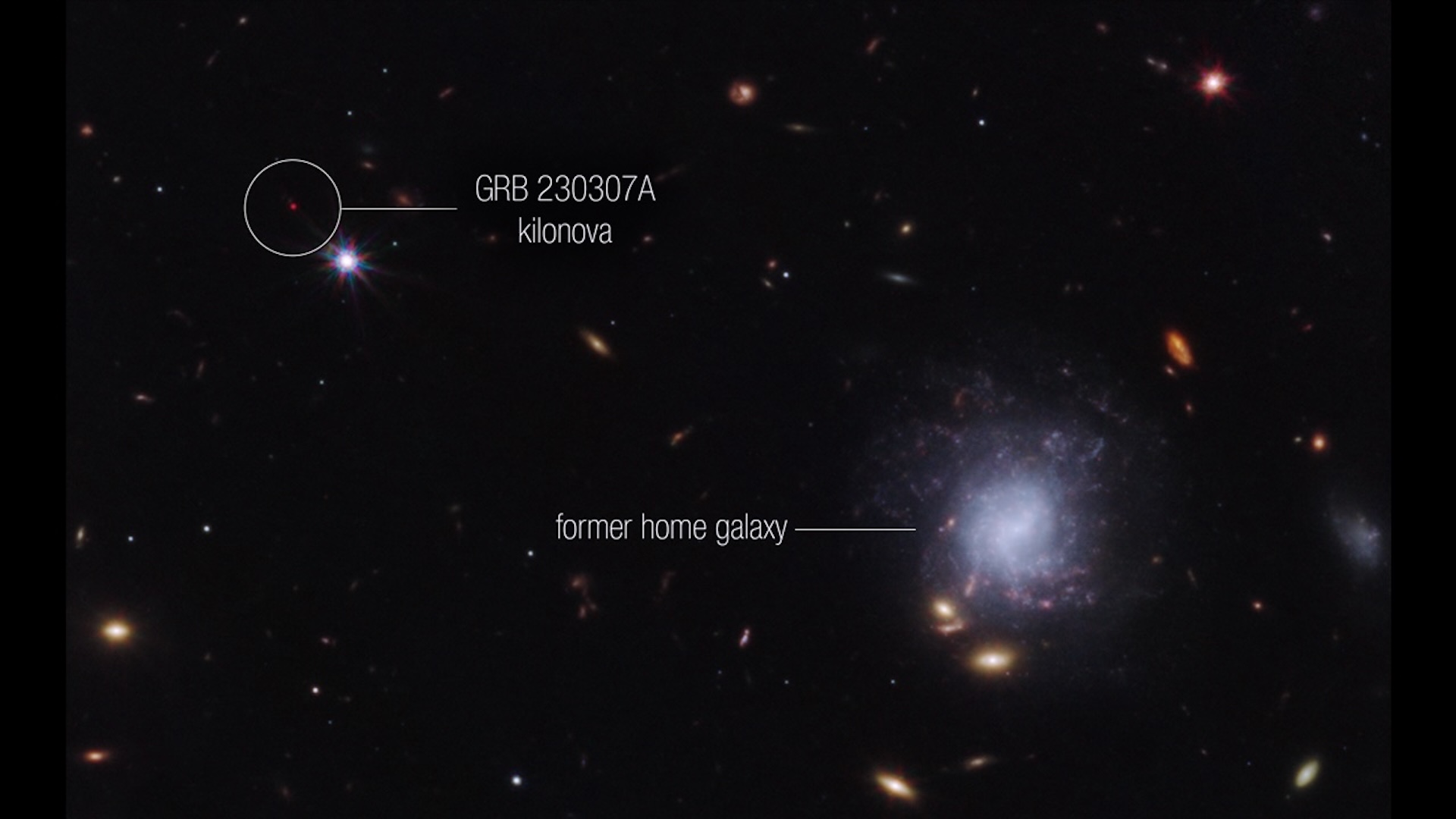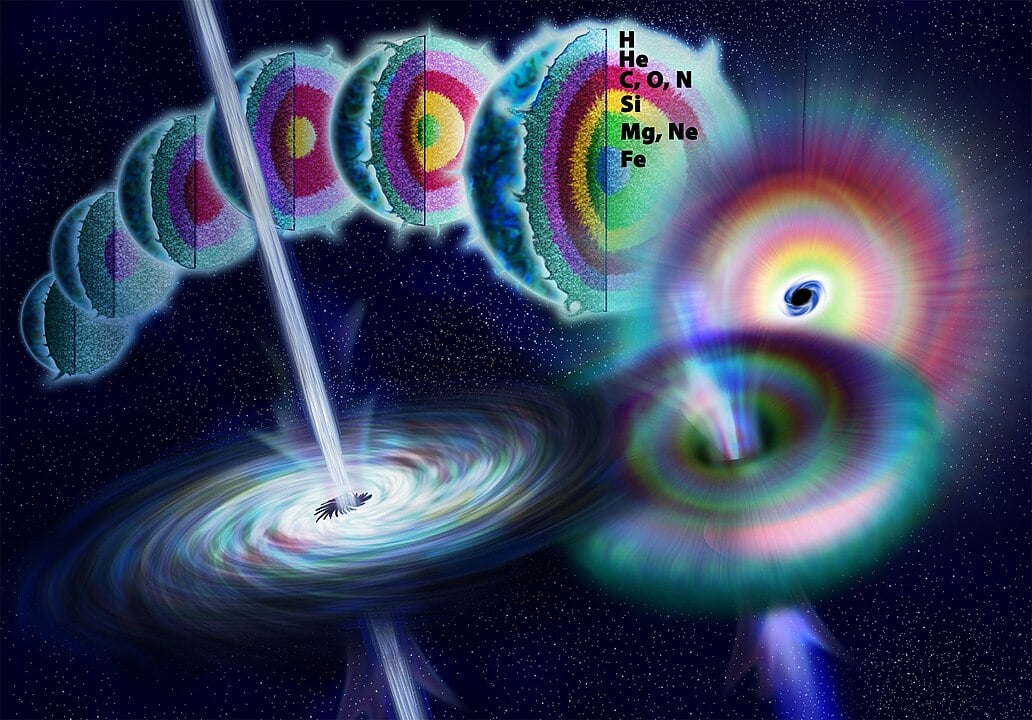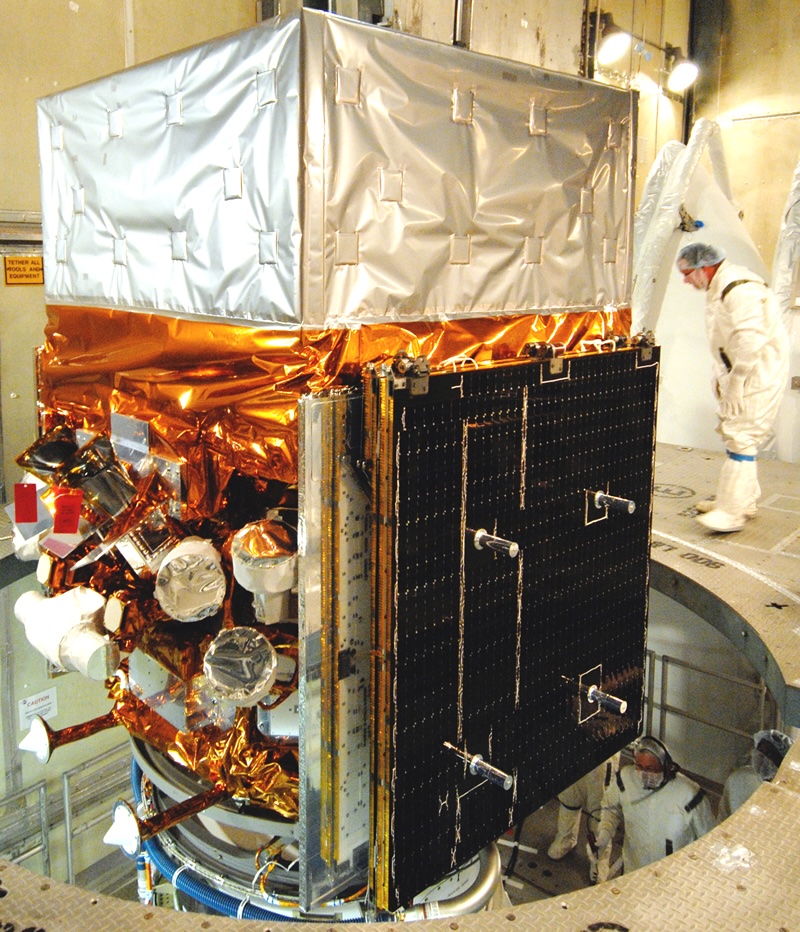Astronomers detect first 'heartbeat' of a newborn star hidden within a powerful cosmic explosion
Astronomers have uncovered the source of a strange, repeating signal nestled within a powerful cosmic explosion.

Gamma ray bursts are the most luminous explosions in the universe, briefly outshining entire galaxies in a violent flash of high energy radiation. These - excuse the pun - astronomical detonations release more energy in a few seconds than our sun will produce over its entire ten billion year lifetime, sending jets of gamma rays racing through space. Despite their incredible brightness, gamma ray bursts are fleeting events, lasting anywhere from milliseconds to several minutes before fading away.
On 7th March 2023, satellites detected one of these gamma ray bursts, this one designated GRB 230307A. It was the second brightest burst ever recorded and originated from the collision and merger of two compact stars, likely neutron stars, located in a distant galaxy. What made this event particularly curious was its unusually long duration of one minute, when theory predicted it should last less than two seconds for this type of merger event.

"This event gave us a rare opportunity, by uncovering its hidden 'heartbeat', we can finally say with confidence that some GRBs are powered not by black holes, but by newborn magnetars."
Professor Bing Zhang, Chair Professor of the Department of Physics at HKU and co-corresponding author of the study.
An international team led by researchers from the University of Hong Kong, Nanjing University, and the Chinese Academy of Sciences decided to dig deeper into the event. They searched through more than 600,000 datasets collected by China's GECAM satellites and NASA's Fermi satellite, searching for hidden patterns within the burst. What they found was a repeating signal that maintained a very consistent rhythm over time revealing that the star was spinning at 909 times per second. This rapid pulsation represents the first direct detection of a periodic signal from a millisecond magnetar inside a gamma ray burst.
The surprise was understanding why the signal was so brief. The team theorize that the magnetar's rapid spin imprints a periodic signal onto the gamma ray jet through its magnetic field, but because the jet evolves quickly, this heartbeat becomes visible only when the emission briefly becomes asymmetric. For just 160 milliseconds, the periodic pulse was detectable before the jet's symmetry concealed it again.

The discovery transforms our understanding of the most extreme explosions in the universe and shows that newly born magnetars can survive compact star mergers. The research opens fascinating new avenues in astronomy, linking gamma rays, gravitational waves, and the physics of compact stars under the most extreme conditions imaginable.
The original version of this article was published on Universe Today.
Get the world’s most fascinating discoveries delivered straight to your inbox.

Mark Thompson is known for his tireless enthusiasm for making science accessible, through numerous TV, radio, podcast theater appearances, and books. He was a part of the award-nominated BBC Stargazing LIVE TV Show in the UK and his Spectacular Science theater show has received 5 star reviews across UK theater. In 2018, Mark received an Honorary Doctorate from the University of East Anglia.
You must confirm your public display name before commenting
Please logout and then login again, you will then be prompted to enter your display name.
